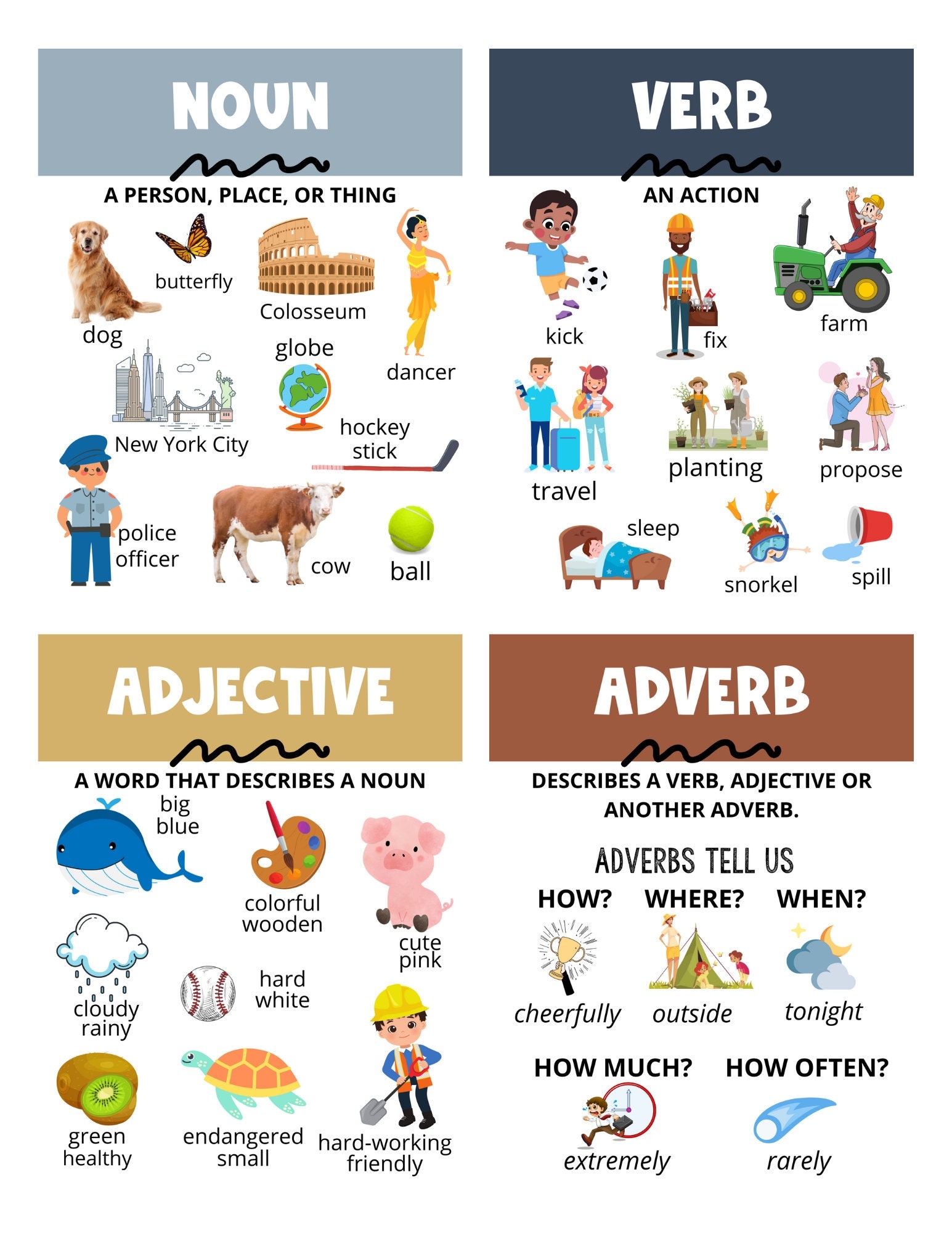When it comes to understanding the English language, knowing the roles of nouns, verbs, adjectives, and adverbs is crucial. These parts of speech play important roles in forming sentences and conveying meaning. Let’s delve into each of these categories to gain a better understanding of how they function in language.
Before we dive into the details, let’s define each of these parts of speech. Nouns are words that represent people, places, things, or ideas. Verbs are action words that show what the subject is doing. Adjectives describe or modify nouns, while adverbs describe or modify verbs, adjectives, or other adverbs.
Starting with nouns, these words are essential for identifying and naming the subjects of sentences. They can be concrete, such as “book” or “car,” or abstract, like “love” or “happiness.” Nouns can also be proper, like “London” or “Jennifer,” which refer to specific entities.
Verbs, on the other hand, are the engines that drive sentences. They express actions, events, or states of being. Verbs can be dynamic, like “run” or “eat,” or stative, such as “be” or “think.” Without verbs, sentences would lack movement and direction.
Adjectives add color and detail to nouns, providing more information about their qualities. They answer questions like “What kind?” or “Which one?” Adjectives can be simple, like “red” or “big,” or compound, such as “well-known” or “three-year-old.”
Finally, adverbs help to clarify or modify verbs, adjectives, or other adverbs. They provide information about how, when, where, or to what extent an action is performed. Adverbs can answer questions like “How?” or “When?” They can be single words, like “quickly” or “often,” or phrases like “in a hurry” or “at midnight.”
In conclusion, understanding the roles of nouns, verbs, adjectives, and adverbs is essential for constructing clear and meaningful sentences. By knowing how each of these parts of speech functions, you can communicate effectively and convey your ideas with precision. So, the next time you’re writing or speaking, pay attention to the noun-verb-adjective-adverb dynamic to ensure your message is clear and impactful.
